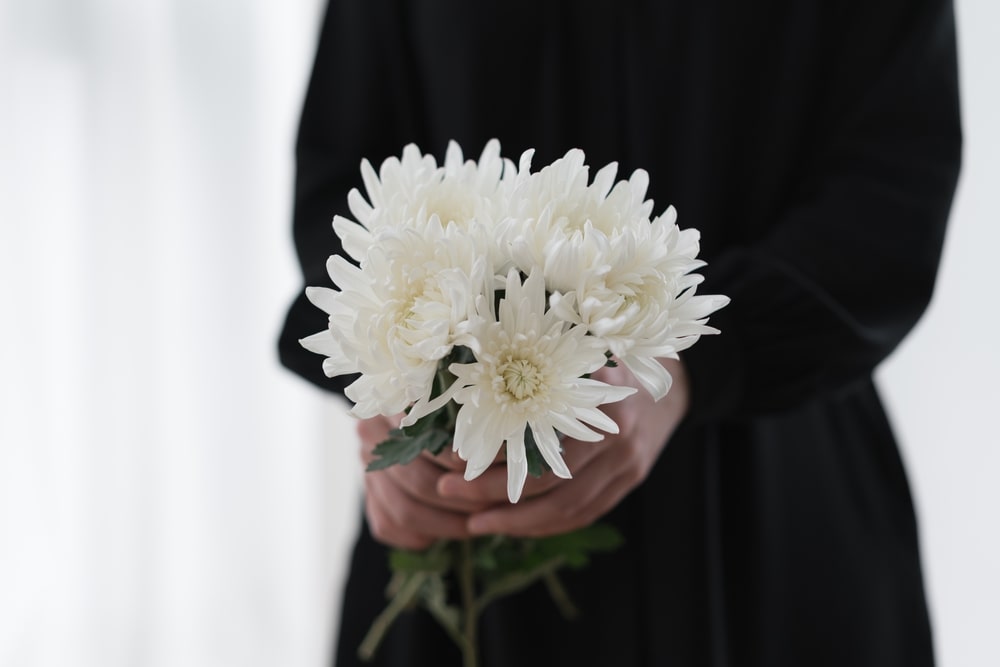If you’ve attended a funeral or memorial service, you’ve likely seen a cascade of beautiful sympathy flowers gracing the front of the chapel, church, or venue. Whether burial or cremation is chosen, flowers are arranged in a vibrant display of care, love, and support. But why do we give sympathy flowers? How long has humankind been taking part in this practice? Let’s take a deeper look.
A Practice that Goes Back Millennia
Every culture on the planet, going back as far as we can, records some form of funeral ritual. From the Ancient Greeks and Egyptians to the Neanderthals, every people group has found some way to honor their dead. With sympathy flowers, two archeological finds have given us insight into how flowers were used in millennia past.
Raqefet Cave
In 2013, a five-chambered grotto, now called Raqefet Cave, was found on the slopes of Mount Carmel in modern-day Israel. Dated to 14,000 years ago, researchers unearthed the final resting place of four individuals. Upon further study, the team discovered that the four had been buried on a literal bed of flowers. The flowers were pressed into a thin layer of mud coating the limestone floor, and they included Judean sage and members of the mint and figwort families. But there is evidence that goes back even further!
Shanidar Cave
First discovered in the 1950s, Shanidar Cave housed the remains of 10 people (identified as Neanderthals), who were found near clusters of flower pollen. At the time, the concept that flowers were left on the grave was dismissed. Researchers decided the pollen’s presence must be from modern contamination or from burrowing rodents and insects.
HOWEVER, in late 2019, excavators unearthed a new skeleton in the same area, dating to 70,000 years ago. This one was discovered in sediment that contained ancient pollen and other mineralized plant remains. As a result, the idea of flower burials so early in humankind’s history was revived! While testing is still underway, the research team expects confirmation of early flower burial practices.
But Why Do We Give Sympathy Flowers?
Historically, to cover unpleasant scents
Before embalming became common practice, flowers were used to cover up unpleasant smells. Mourners wanted to pay their respects, but without a way to slow decay, flowers were used to mask any odors. Former President Andrew Jackson provides a famous example. By the time his funeral was complete (thousands of people came), his casket didn’t smell good. The undertaker surrounded Jackson with flowers to alleviate the smell. Also, side note, someone (likely the undertaker) removed Jackson’s swearing pet parrot from the service for disturbing the proceedings – who knew?!
To show love, care, and support
Today, sympathy flowers show love to the deceased person and support to the grieving family. Just as we give flowers at anniversaries, weddings, graduations, and other special days, flowers universally represent our love, our care, and our deep-seated support.
To create a warm and vibrant atmosphere
For some of us, a funeral or memorial service would look incomplete without flowers. The casket or urn might look quite alone with no flowers or embellishments. For many funerals, sympathy flowers create a lovely canvas and show that people deeply care about the person who has died. When there are no flowers, people may unconsciously wonder why – sympathy flowers are that ingrained in our cultural understanding of funerals.
(NOTE: In some religions, flowers are taboo or not expected. If you aren’t sure whether flowers are appropriate, respectfully ask the family.)
To express feeling and sentiment
Traditionally, flowers have meaning and convey a message. By choosing specific flowers, you can send a special letter of love. For example, white lilies symbolize purity, sympathy, and restored innocence. Carnations are a popular choice. White carnations symbolize pure love and innocence; red carnations represent admiration and deep love; while pink carnations stand for eternal remembrance. To learn more about the meanings of flowers, go to 7 Popular Sympathy Flowers and Their Meanings.
What Kind of Floral Arrangement Should I Give?
If you choose to give sympathy flowers, you will likely not buy the casket spray (the arrangement that lies on top of the casket). The most common types of arrangements to gift are:
- Standing sprays – a hand-designed arrangement of mixed flowers on a wire stand
- Floor bouquet – an arrangement placed on the floor near the urn or casket
- Funeral basket – a smaller arrangement that sits in a basket or large plastic container
- Funeral wreath – a wreath of flowers placed on a standing easel
- Funeral garland – a strand of flowers that can lay across a casket or encircle an urn
Arrangements come in all sizes, colors, and costs. Either the funeral home or your local florist can give you insight into your options. In fact, some funeral homes partner with local florists, allowing you to order an arrangement through the funeral home’s website. You can speak to the funeral home about this service or reach out to your go-to florist.
What if the Family Indicates a Charity “In Lieu of Flowers”?
If the deceased’s family has selected a charity in lieu of flowers, it’s your choice what you would like to do. Giving a sympathy gift is up to the discretion of the gift giver. If you prefer to give flowers rather than a donation, do so. If you would like to support the charitable organization, do so. Or, if you’d like to do both, that’s fine, too. Ultimately, the goal of a sympathy gift is to convey love, care, and support. We all do that in different ways – find the one that best communicates your personal feelings.
For more ideas on sympathy gifts, check out these resources:
10 Caring and Creative Sympathy Gifts
7 Popular Sympathy Flowers and Their Meanings









